“Henry Sugar” Costume Designer Kasia Walicka Maimone on Weaving an Oscar-Worthy Story for Wes Anderson
When she was five years old, Kasia Walicka Maimone started making her own clothes. “Growing up in Poland, a lot of people had that skill,” she says. “My grandmother made clothes. My mother, a doctor, made clothes. And I did clothes for my musician friends without giving it a thought. I was like, ‘What’s the big deal?'”
As it turned out, Maimone’s talent for costuming became quite a big deal. After studying English in Warsaw, moving to New York City, and enrolling at the Fashion Institute of Technology, Maimone designed outfits for dance, theater, and indie films before teaming up in 2012 with Wes Anderson on his acclaimed Moonrise Kingdom. She went on to costume-design Steven Spielberg’s Bridge of Spies and Ready Player One before crafting the spectacular turn-of-the-century fashions recently showcased in The Gilded Age series. Last year, Maimone returned to the Wes Anderson fold and designed the outfits for his Oscar-nominated short film The Wonderful Story of Henry Sugar.
Shot on 16-millimeter film on a London soundstage, The Wonderful Story of Henry Sugar, based on British writer Roald Dahl’s 1973 story, casts Ralph Fiennes as the author, with Benedict Cumberbatch portraying the upper-class title character who trains himself to see through blackjack cards by studying the memoir of an Indian mystic showman, played by Ben Kingsley.
Speaking from New York City, Maimone likens her collaborative back and forth with Wes Anderson to ping pong and explains how she uses “real clothes” as the foundation for the writer-director’s theatrically elevated narratives.
You first immersed yourself in the Wes Anderson Method when you worked on Moonrise Kingdom. He’s famously meticulous so I imagine that must have been an intense experience.
That’s an interesting way to refer to define it, the Wes Anderson “method.” I call it the Wes Anderson world. His vision is so precise that whatever the influences are, they get transformed. On Moonrise Kingdom, I learned his [filmmaking] language very quickly. You do a lot of research and then get immediate responses from him to your ideas. It’s like playing ping pong on an Olympic level because he shoots his ideas very fast, and you cannot fall off.
What was it like to reunite with Wes Anderson on Henry Sugar. ?
It was a blast and a fun challenge for me because I had been doing The Gilded Age, which is a completely different kind of grand scale. With Wes, it’s like you have to re-train your eye for this element of extraordinary precision. [Laughing]. I also blame the miniatures [in the stop-motion animated movie Fantastic Mr. Fox], where he developed a whole other level of precision. Once he experienced that miniature scale, Wes came back on a grand scale, but he’d sharpened all his skills.
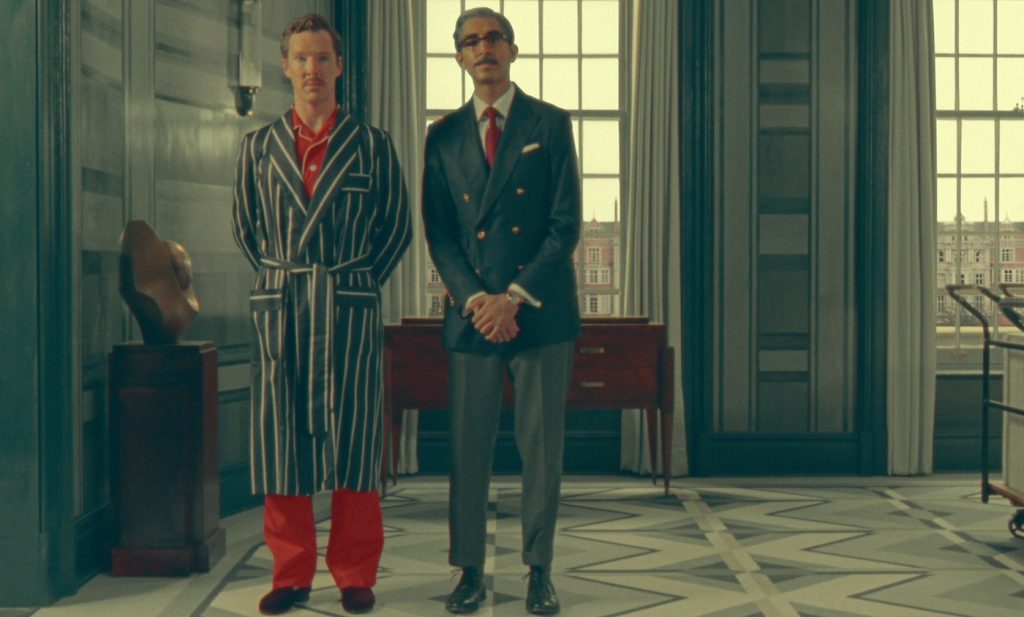
Before you generated ideas for Henry Sugar, what was Wes Anderson’s creative brief to you?
It’s funny because Wes and I don’t actually talk that much. We just send each other visuals. There were a lot of specific descriptions in the Henry Sugar script, so I prepared a presentation of characters. From there, I did rough sketches, he’d send back images, and we kept communicating like that until, after a few weeks, the vision for each character became sharper and sharper. Wes also made a short film that portrays the story in sketches.
Ralph Fiennes introduces the story as author Roald Dahl, and he looks relaxed and elegant, just as you might imagine a successful English writer from that period would look.
Much of that outfit was inspired by the real Roald Dahl, except we manipulated the color for the purpose of Wes’ movie. Ralph wears a terry cloth polo shirt like the real author wore, vintage polyester pants, and a camel-color sweater made of wool mixed with cashmere.
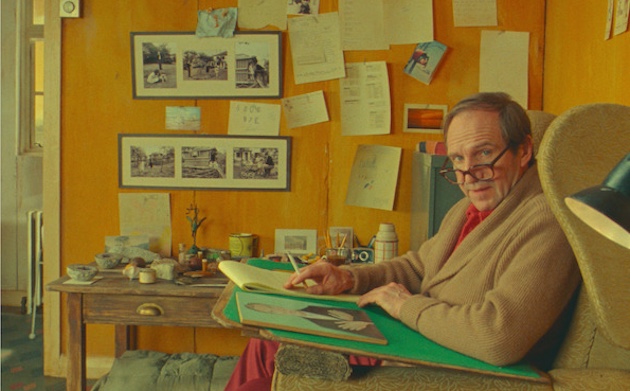
Yeah, the colors are so warm — you use one shade of red for the shirt and a slightly different shade for the pants.
We like to use unexpected combinations of colors to create this world of strategized randomness.
Strategized randomness?
It’s a very controlled, heightened world, and sometimes, there are no words to describe how we do it. It’s about the dynamics of color and how they play with each other. With Ralph, I’d gather a bunch of pieces, sketch, do the first fitting, see what works, build on top of that for the second fitting, third fitting, and we’re done.
Benedict Cumberbatch goes through a lot of costume changes as Henry Sugar, starting with his origins as an entitled English gentleman.
Henry’s look was very much driven by the culture of bespoke Saville Road tailoring and the quiet elegance of the British aristocracy. We had a tailor from Saville Road who understood that language.
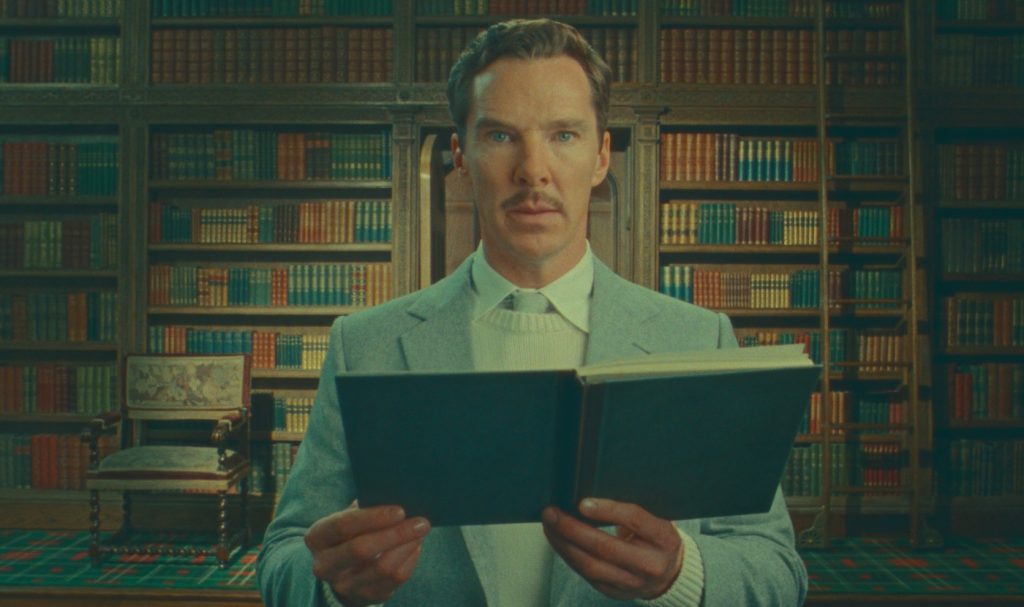
Later on, there’s a fun montage where Henry tries on a bunch of different disguises in rapid succession.
Those fittings were fun because we got to watch this spectacle of Benedict morphing from one person to another. It’s not just about him wearing the clothes; it’s him embodying the character on the page. When Benedict is dressed as a tourist, it’s a completely different body language from when he emanates being a priest. The clothes I provided were just a level of skin that Benedict transforms into, using his craft, skill, talent, and inner chameleon.
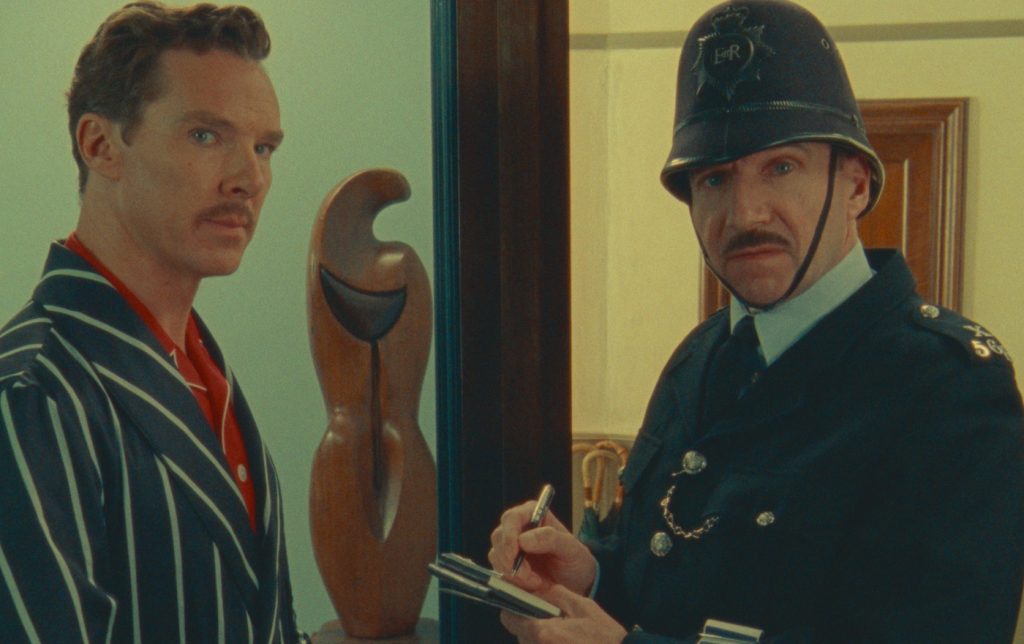
Ben Kingsley’s character from India introduces a meditative vibe to the story. How did you conceptualize his clothing?
We got all of Ben’s pieces from India. They had to be real so we worked with a bunch of people there. We also had an extraordinary German tailor with us in London. I always try to go to the real place for the source. British textiles for the British gentlemen; for Ben, we go to India; and for Roald Dahl, it’s just what he would be really wearing [from our research]. There’s always a mix of construction and real garments because Wes’ movies are deep with cultural references. When the pieces come from the real world, even if they get transformed, they resonate, and audiences respond to the colors and the textures. It’s coded in a way like a cultural response machine.
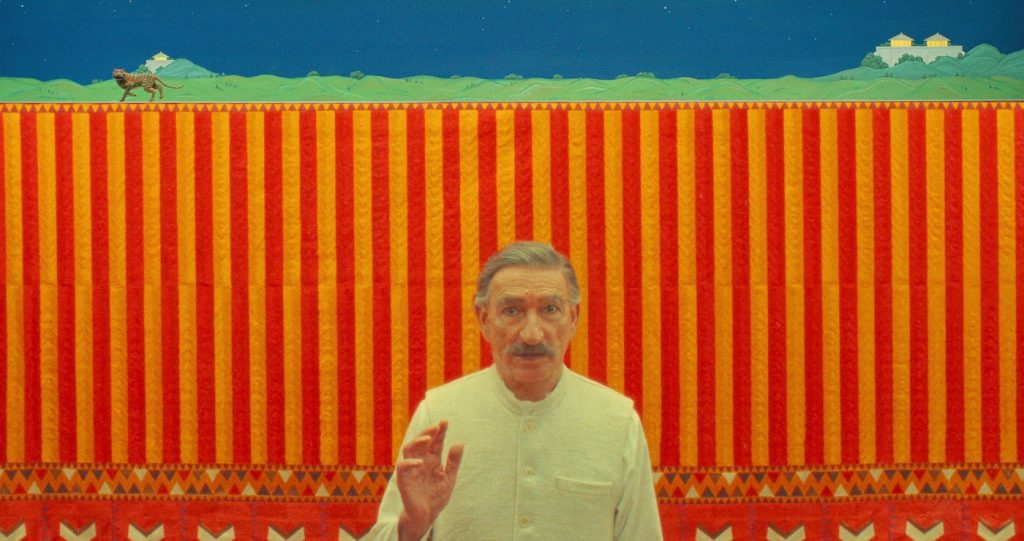
Your color choices coordinate so well with the production design palette devised by Adam Stockhausen. You two must collaborate well together?
We’ve done a bunch of movies together—Moonrise, Bridge of Spies, Ready Player One, and now Henry Sugar—and we don’t really have to think about it. Adam and I share information constantly, so I know exactly what he’s doing, he knows what I’m doing, and we bounce off each other. Of course, Wes knows exactly what he’s looking for, so it’s like we’re continuously putting this puzzle together.
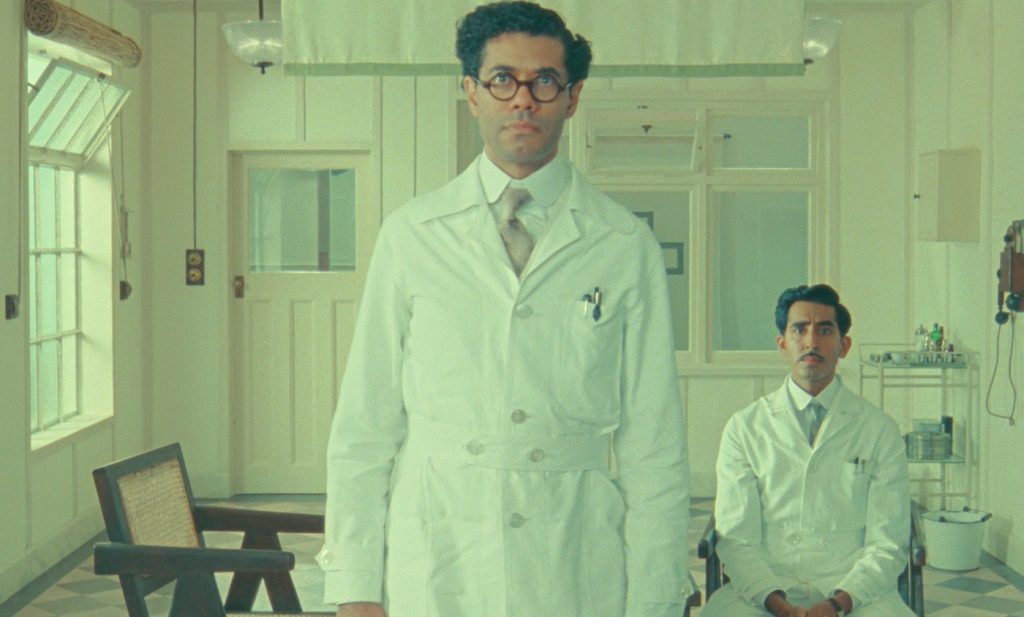
Color in Wes Anderson’s films often operates on a whole other level in the ways these unusual hues clash or harmonize to evoke different moods.
That’s one thousand percent deliberate. The color creates the rhythm, driven by the characters and the mood. It’s like asking a musician how she plays music: We play color in exactly the same way as if we’re playing an orchestral piece that is kind of wild but that also breaks apart. Wes’ work is very theatrical and highly controlled. I come from theater, so I think that training comes through.
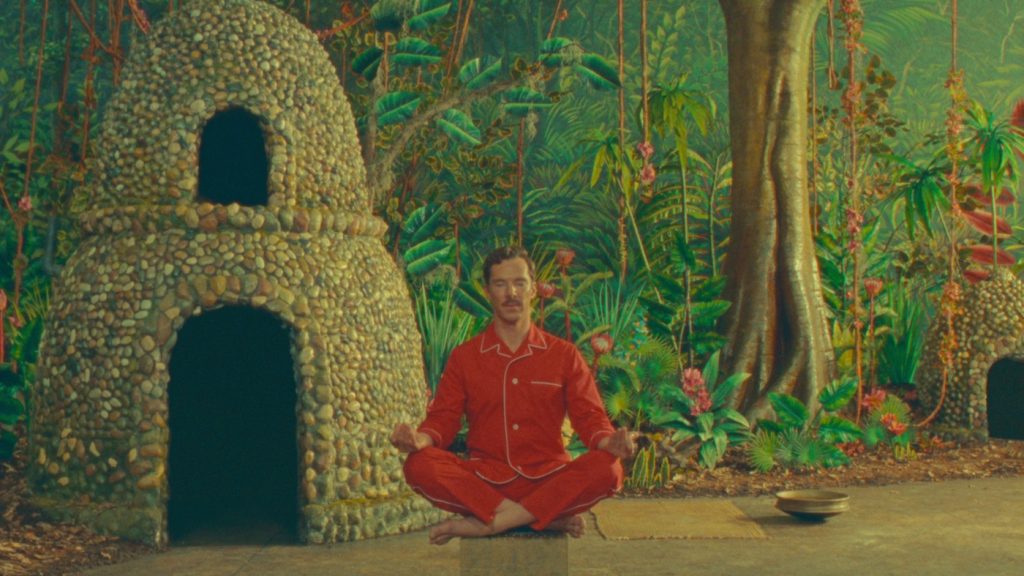
What was your gut reaction the first time you saw The Wonderful Story of Henry Sugar in a movie theater?
It was magical. There’s so much suffering in the world now, and I feel proud to be an entertainer and to be part of a business that brings people joy. The Wonderful Story of Henry Sugar, like The Gilde Age—these pieces bring joy.
Henry Sugar definitely has an uplifting message that you don’t always find in arthouse films.
There are tons of dark ones, which I’m also very proud of, but this is not that. Particularly this year, we need uplift as a society. I also love Henry Sugar because it’s about the discipline of the mind. I think we all need to exercise that, like, big time.
Featured image: The Wonderful Story of Henry Sugar. (L to R) Benedict Cumberbatch as Henry Sugar, Sir Ben Kingsley as Croupier and Wes Anderson (Director) in The Wonderful Story of Henry Sugar. Cr. Roger Do Minh/Netflix ©2023



